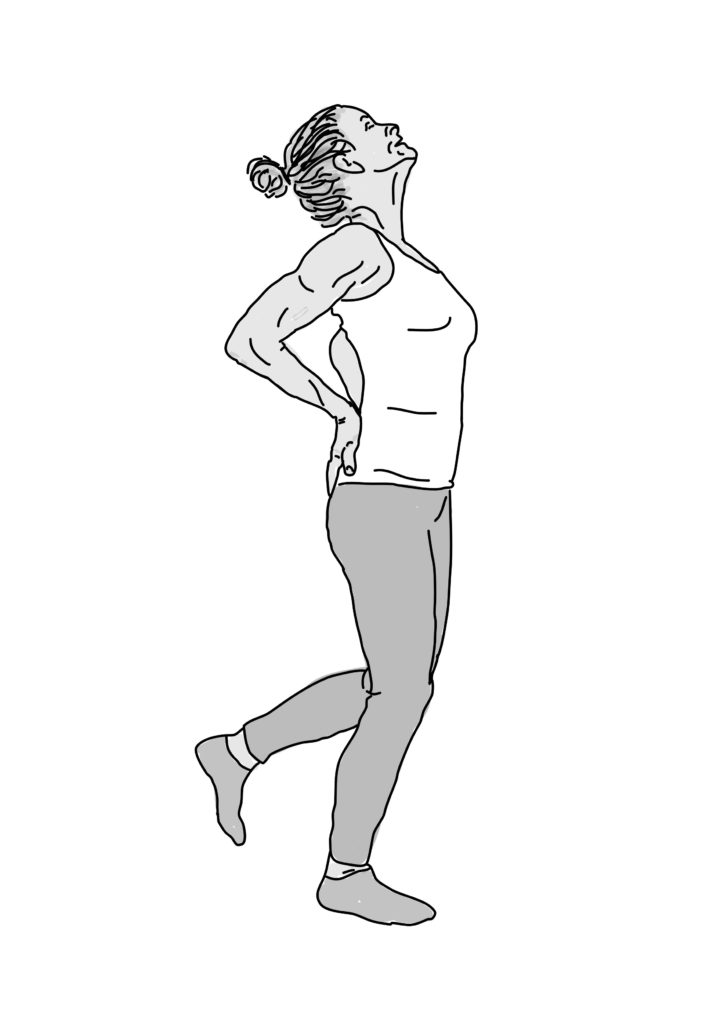A test to determine your type should activate the respective muscle chains in full and make them subjectively and objectively verifiable. To find out which type you are, we’ll carry out a strength test. The basis for this are the principles of posture, which are described in the EBook. A significant specific posture is tested on stability.
In order to activate opposing musclechains, these attributes must differ in the position:
- Weight on footpads vs. heel/middle of foot – IMPORTANT!
- Pelvis tilt forward vs. upright
- Long neck vs. short
- slight exhalation vs. inhalation
- Arms rotate inwards (pronation) vs. outwards (supination)
Your type will easily find stability in its specific position and, if necessary, can also withstand against external physical pressure (a gentle push of a training partner). The opposite type, however, can hardly find balance in this position and is quickly pushed by external pressure from a training partner.
IMPORTANT: Pay particular attention to the weight on the foot (i.e. balls of feet or heel/middle), as well as a correct position of the pelvis during the test!
Always test both postures! The posture, in which one finds a stable balance (even against external pressure), corresponds to the dominant power type.
It is ideal to carry out the test with a partner. If you don’t have a training partner right now, just carry out the self-test and re-confirm the result objectively in the partner test!
Extensive BLUE Type

Step 1:
Place your hands on the kidney area, the elbows tilt towards each other. Push your hands down a little against the pelvic bones (buttocks) to support the pelvis when straightening backwards (important). The front hip area opens and the weight tends to the heel bone. Now put your head back and breathe in comfortably. Hold your breath. If you want to continue breathing during the exercise, do so with your lungs relatively filled. Pay particular attention to the upright position of the pelvis and that your body weight is concentrated on the rear third of the foot.
To increase the level of difficulty you can …
Level 2: … lift your left foot off the floor without pushing your left knee forward (!) And / or
Level 3: … move around the balance point with subtle movements and explore the scope.

You are an extensive BLUE type if you can stand solidly in this posture without great force. The centering RED Type, on the other hand, does not find good balance in stage 2, but begins to wobble and tilts backwards. In any case, confirm the result with a partner!
Centering RED Type

Step 1:
Position yourself in a position ready to jump. A bit like a skier. Tilt the pelvis slightly forward. Now sink slightly into the knees with weight on the balls of your feet. The hands are placed one above the other at the level of the navel, with the palms facing down. Look to the ground in front of you keep your neck long. Exhale comfortably. Pay particular attention to your body weight concentrating in the front part of your foot (on the ball of your foot)! Your energy flows downward during the exercise.
To increase the level of difficulty you can …
Step 2:… lift your right foot off the floor, forward; make sure to keep your knee in front of the other (!) and / or
Level 3: … move around the balance point with subtle movements.
You are a centering RED Type, if you can stand solidly in this posture without great force. The extensive type, on the other hand, finds no balance at level 2, but begins to wobble and tip over. In any case, confirm the result with a partner.
